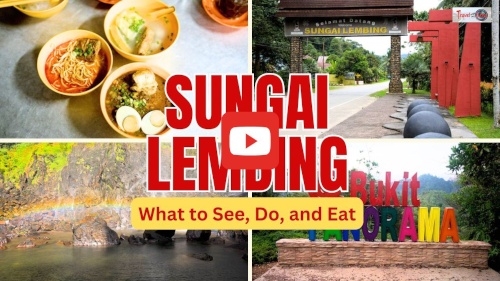Have you ever stumbled upon a place that quietly steals your heart? That’s what happened when we visited Sungai Lembing. Tucked away just under an hour from Kuantan, this little town surprised us with its peaceful charm, misty hills, and rich history.
We spent two leisurely days in this quiet town, climbing hills to catch the morning light, savoring local flavors, and listening to the soothing rush of waterfalls. It was a refreshing escape, a world away from the hustle and bustle of city life.
If you’re looking for a gentle escape and a taste of old Malaysia, come along! Here’s everything we saw, tasted, and loved in Sungai Lembing.
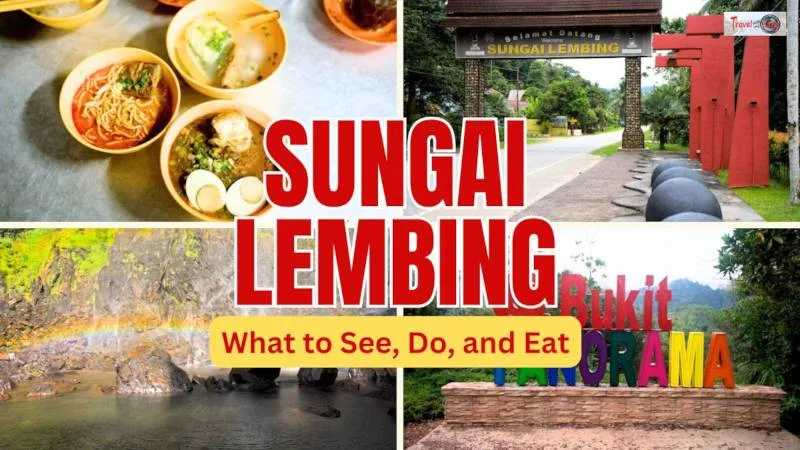
What to see, do, and eat at Sungai Lembing
Click on the places below to be directed to the respective section.
- The Quaint and Laid-Back Vibe
- Time Capsule Retreat
- Satay Sungai Lembing
- The Suspension Bridge
- Food Court at the Market
- Sunrise Hill
- Rainbow Waterfalls
- Mee Sungai Lembing and 家传食铺
- Panorama Hill
- Kedai Makan Fun
- Gua Charas (Charas Cave)
- Panching Waterfall
- Sungai Lembing Museum
1. The Quaint and Laid-Back Vibe of Sungai Lembing
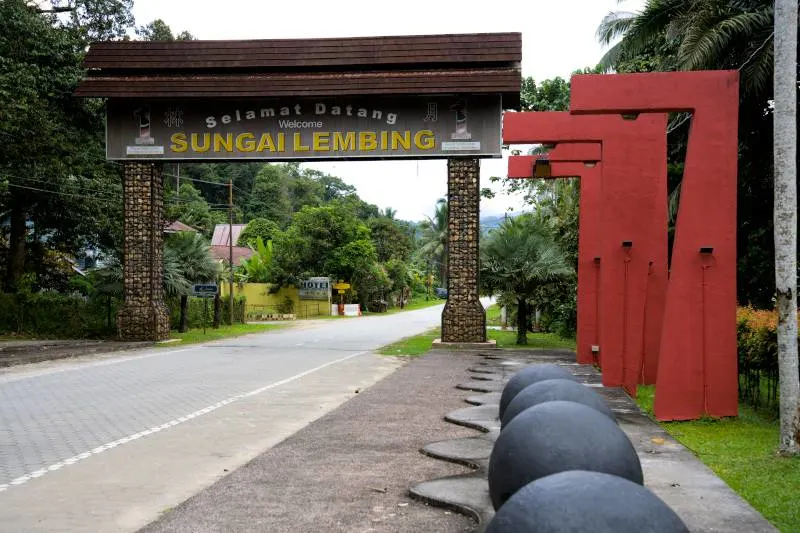
We arrived in Sungai Lembing in the afternoon and were greeted by a colorful entrance leading into town. The street was very quiet, with only the occasional car or motorcycle passing by. It was around 4 p.m. The place felt almost deserted, with most shops already closed.
There’s no rush here, no honking traffic, just quiet streets, kind locals, and nature all around. It’s one of those towns where history still lingers in the wooden shophouses, and the rhythm of daily life moves at its own peaceful pace.

The town consists of just two rows of old shop lots lining the street, but it is remarkably clean and peaceful. In the middle of the road stand several giant trees, which serve as part of the divider between the opposing lanes. These trees appear ancient, their gnarled shapes adding a striking beauty to the streetscape. The vehicles passing through were few, and we could practically stand in the middle of the road and, of course, with some caution.
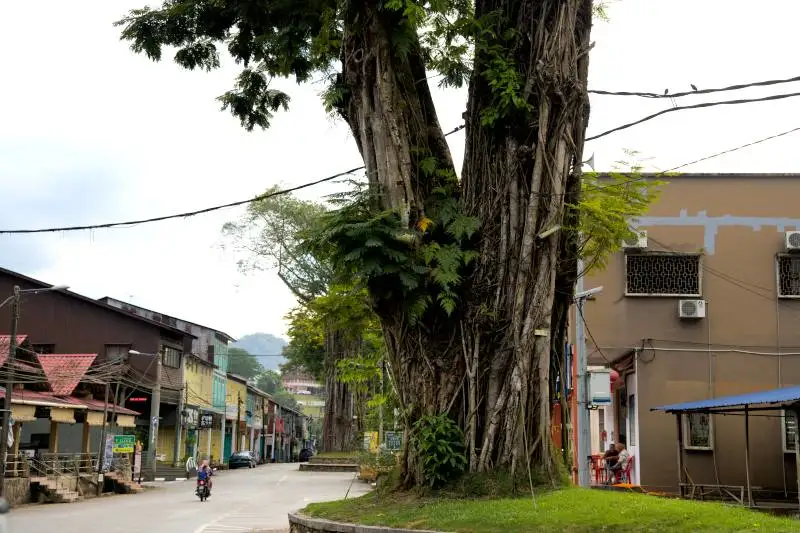
There is also a mosque along the same street, but it was quiet at that time. Perhaps everyone had already gone home? I felt this was the essence of a small town: a relaxed pace of life, far removed from the race for fame or the constant pressure faced by those in bigger cities.
We parked our car and strolled around. Most of the houses were quite old. Some were wooden, and most of the shop lots were double-story. It felt like we had traveled back in time by at least fifty or sixty years.
2. Time Capsule Retreat
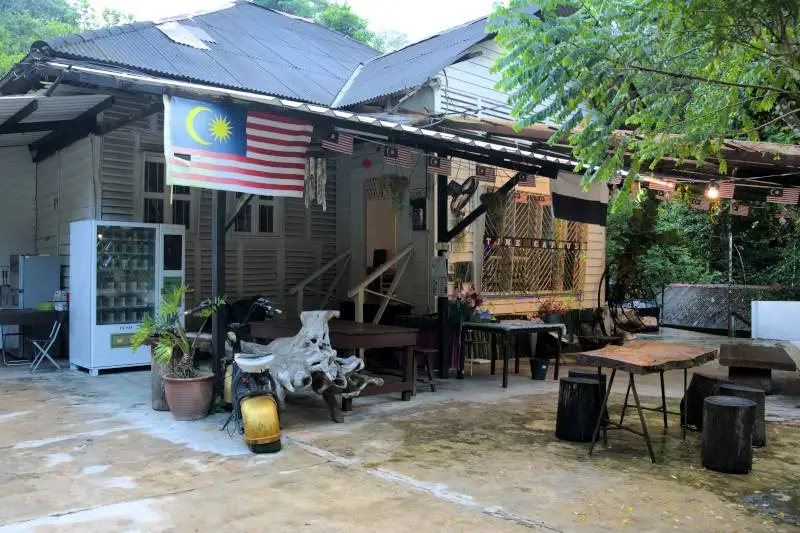
We checked in to Time Capsule Retreat, just a few minutes’ drive from town. We chose this place because we had heard about its unique lodging experience. Guests can opt to stay in individual capsules no wider than a bed, with shared toilets, or in the more spacious units that come with a private bathroom, a table, a sofa, and other basic amenities. We chose the latter for the comfort.
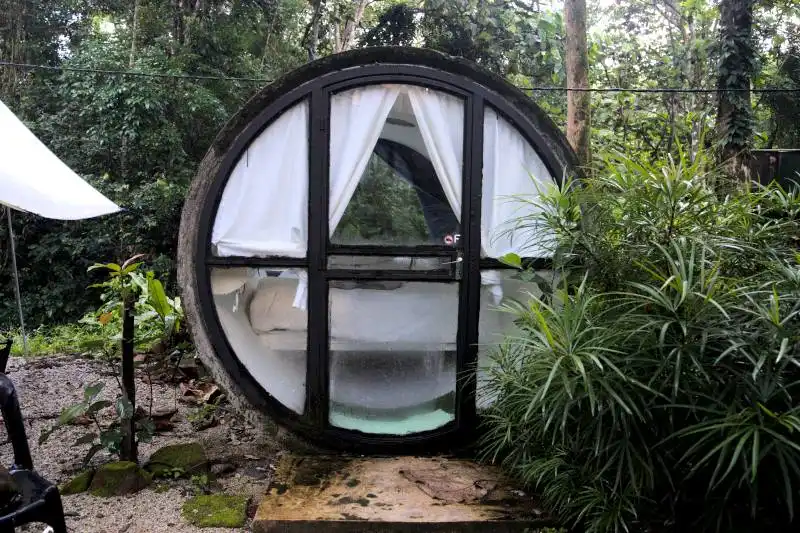
The retreat's real charm lies in its setting. It is nestled in the woods, with everything accessible only on foot. We wanted to experience that tranquil, natural atmosphere without giving up too much comfort. Don’t expect first-class luxury here, but come to enjoy the rustic, raw feeling of being away from the city and immersing yourself in nature.
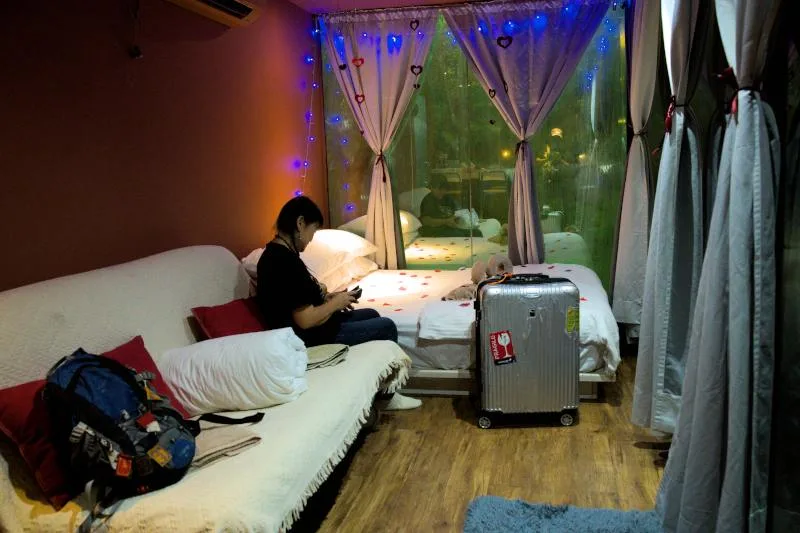
3. Satay Sungai Lembing
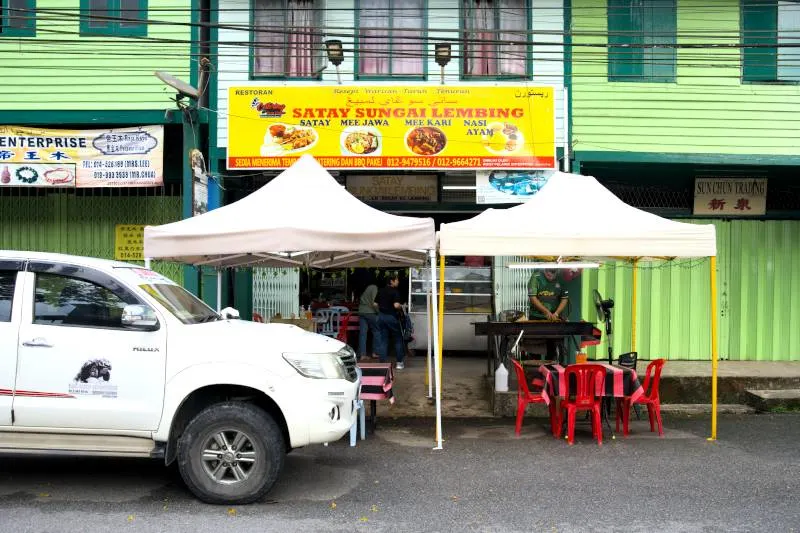
We could only find one Chinese restaurant open, along with a Malay satay stall that was operating.
Feeling a bit hungry, we decided to have some satay at one of the few shops that were still open. As you can see, the neighboring shops on both sides already closed. The satay was decent, and we paired it with a cup of hot Milo.
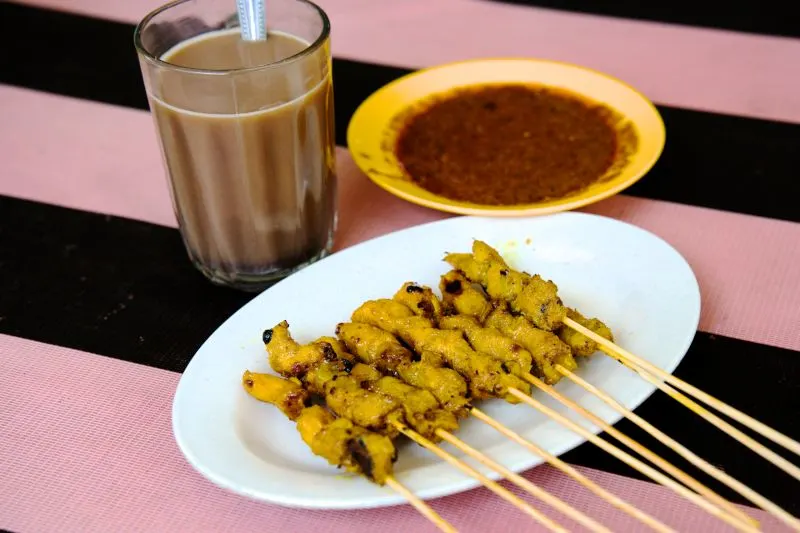
We had a short chat with the owner, who was grilling the satay himself. He shared a few tips on where to visit and pointed out some places of interest around Sungai Lembing.
4. The Suspension Bridge
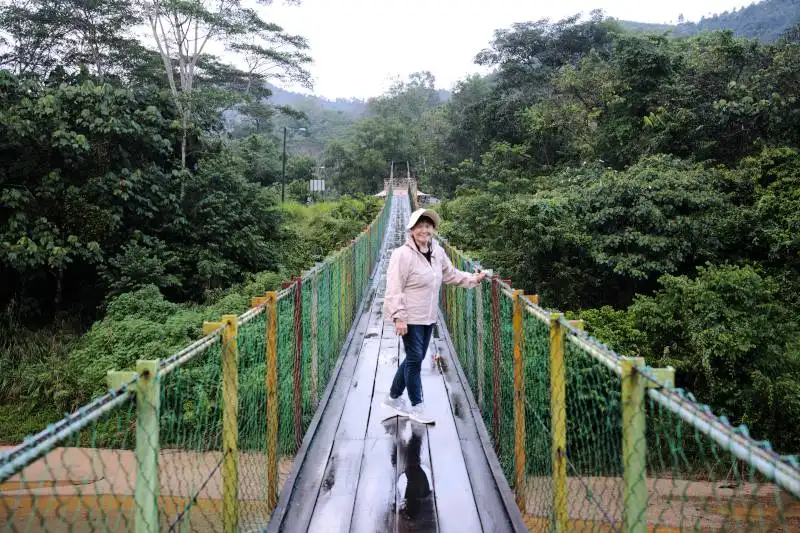
So we drove to the suspension bridge, as recommended by the satay shop owner. It’s a hanging wooden bridge that allows only pedestrians and motorbikes to cross. The entrance was painted in multiple bright colors, and the bridge stretched about 100 meters across the river to the other side of the village.
There’s nothing particularly spectacular to see, but it’s the calmness and quiet that make it worth the visit. (I would describe Sungai Lembing more as a village than a small town, especially from the perspective of someone coming from a large city.) We also noticed another hanging bridge a few hundred meters away. (Later, we discovered that there are quite a number of these hanging bridges across this river.)
5. Food Court at the Market
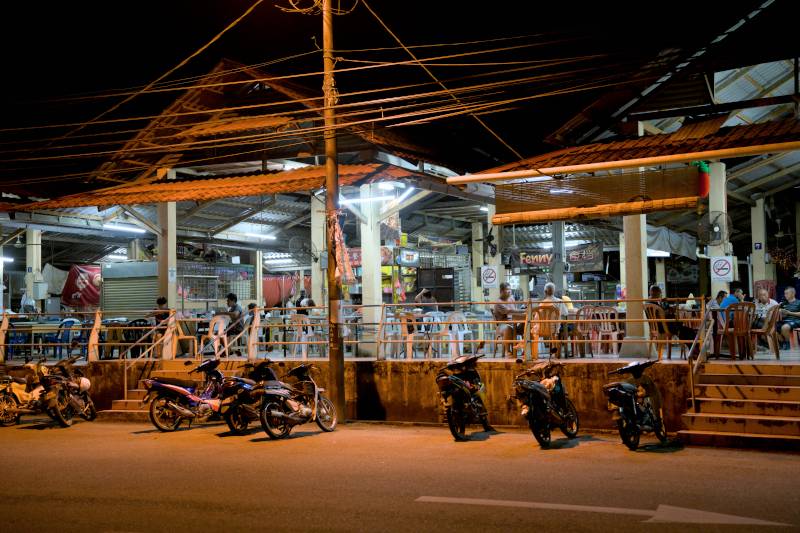
As expected, people living in small towns usually wake up early. So, the next morning, we booked a guided tour of the famous Rainbow Waterfall. To catch the rainbow at just the right time, we had to rise early.
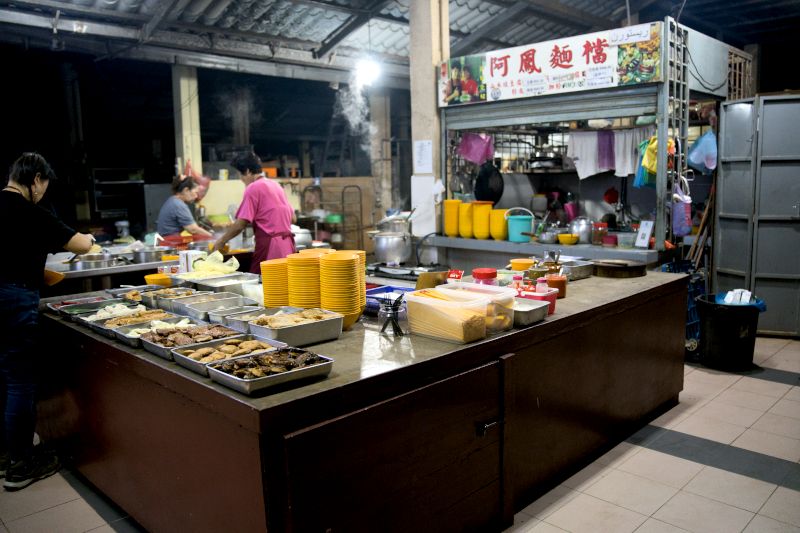
Our guide picked us up at 5:30 a.m. from Time Capsule Retreat and brought us to the food court at the market for breakfast. I was a bit surprised to see quite a few customers were already there, with most of the food stalls open and ready for business.
Our guide, Tony, recommended we try 阿凤面档, one of the most well-known noodle stalls in the food court.
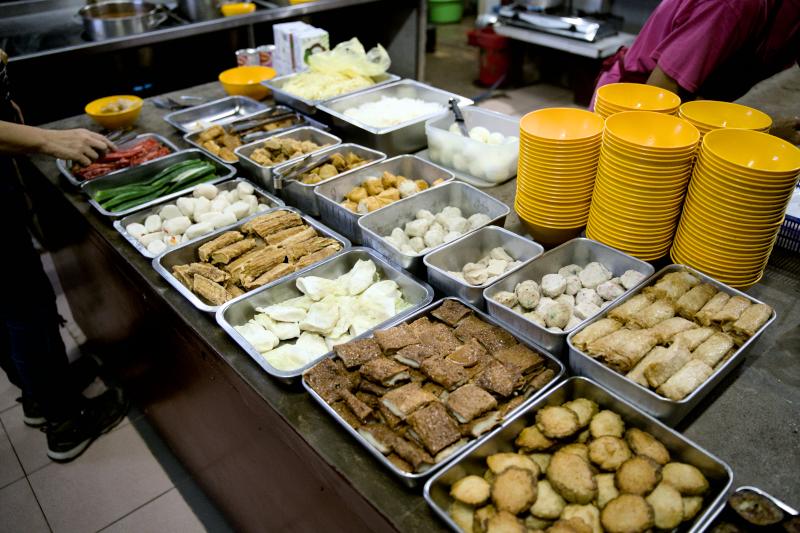
We ordered the famous curry mee and Jawa mee. Both are served with their homemade Yong Tau Foo. They also used the renowned Lembing Noodles (林明面) in both dishes. The noodles were quite good. They had a slightly chewy texture, and we will have them again at other shops later on.
6. Sunrise Hill
After breakfast, we began our journey toward the Rainbow Waterfall, with a stop at Sunrise Hill to watch the sunrise, as it was along the way.
It took us around twenty minutes to reach Sunrise Hill, where our four-wheel drive was allowed to park at the top. There was another young couple who arrived with a saloon car that had to park at the base of the hill, but it was only about a one-minute walk up. The hill is a small peak with a flat, open area.
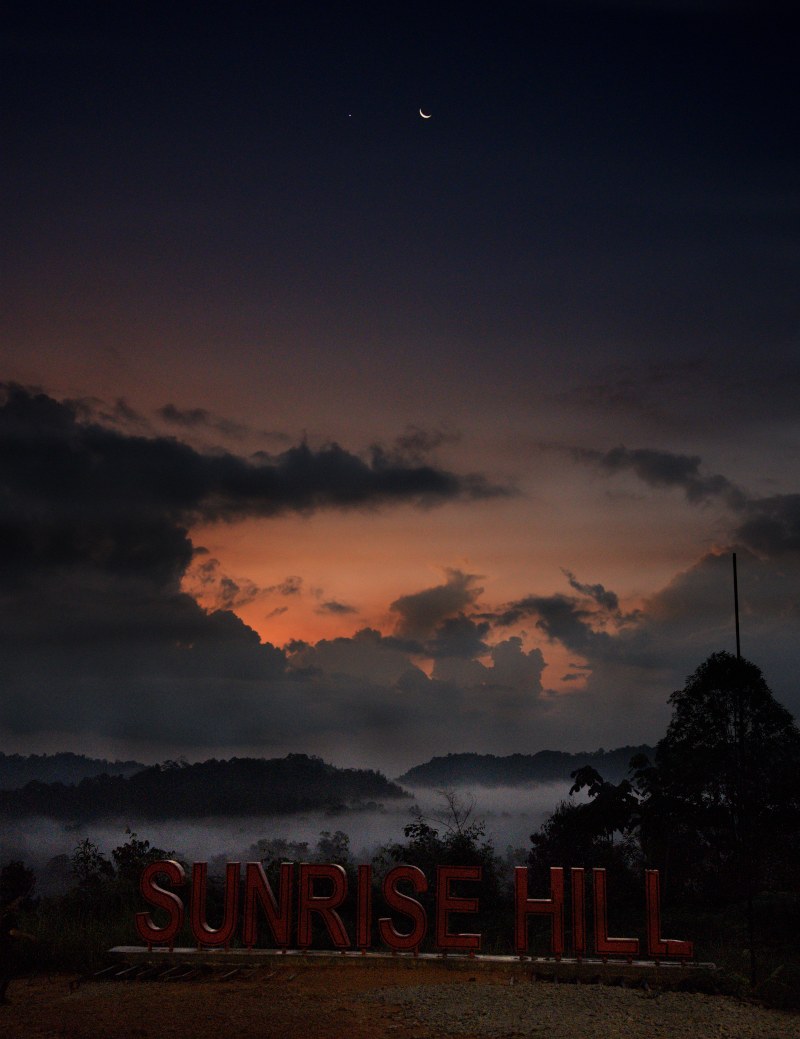
We were facing just the right direction to spot the crescent moon and Venus side by side moments before the sky brightened completely.

The main attraction is the sea of clouds and, with luck, a beautiful sunrise. That morning was slightly overcast, so the sun stayed hidden behind the clouds, but it still managed to cast a few golden rays through the gaps. Even without a full sunrise, the drifting layers of clouds between the mountain ridges were a joy to watch. It was calm, quiet, and mesmerizing.
7. Rainbow Waterfalls
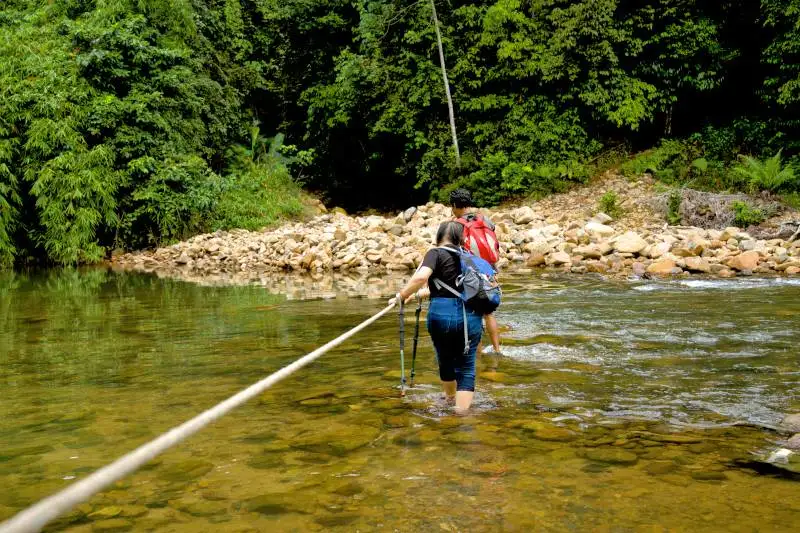
We’ve written a separate article and produced a video dedicated entirely to the Rainbow Waterfall. You can read the article or watch the video by clicking the links. Meanwhile, let me continue our journey in our Hilux.
The journey itself was an adventure, as the route is entirely off-road and only accessible by a four-wheel drive vehicle. At times, our Hilux had to cross shallow rivers. The entire drive from Sungai Lembing town to the trailhead took about an hour.
The trail began after we waded through knee-deep river water. From there, we continued trekking for another hour. The final stretch was more uneven, requiring us to climb over rocks and wade through more streams. But every step was worth it when we arrived just in time. As the sun hit the waterfall at the perfect angle, it created a stunning double rainbow above the shallow pool.
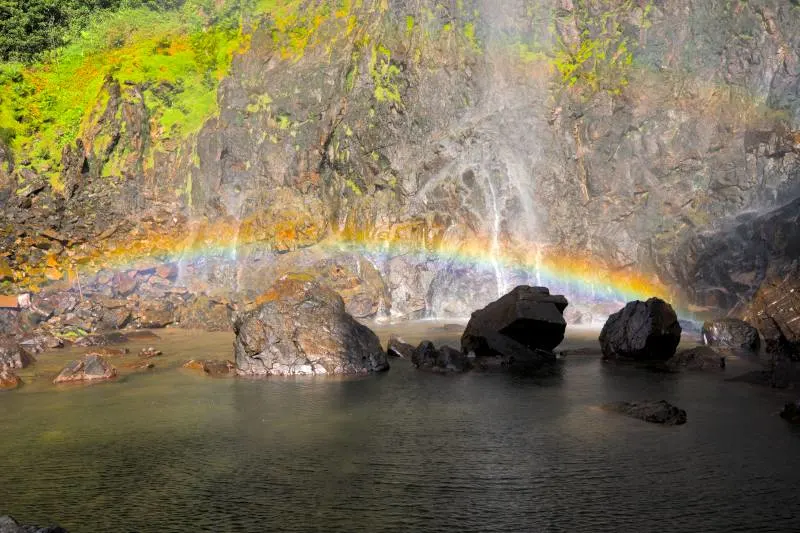
What was even more mesmerizing was standing in the pool and seeing a full halo of rainbow surrounding us. It was just an arm’s length away, so magical.
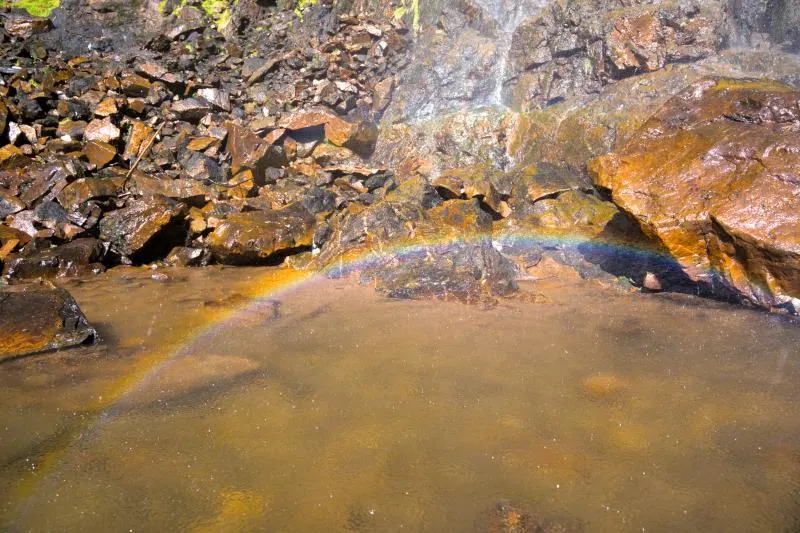
The cost of the tour is RM80 per person, which includes the entry permit. You won’t be able to visit on your own, even if you have a four-wheel drive, as there's a locked gate midway. Only guides have the key to open and re-lock it after passing it.
It’s highly recommended to wear rubber shoes with studs (locally known as Adidas Kampung), as your regular trekking shoes will be completely soaked when crossing rivers and streams.
8. Mee Sungai Lembing and 家传食铺
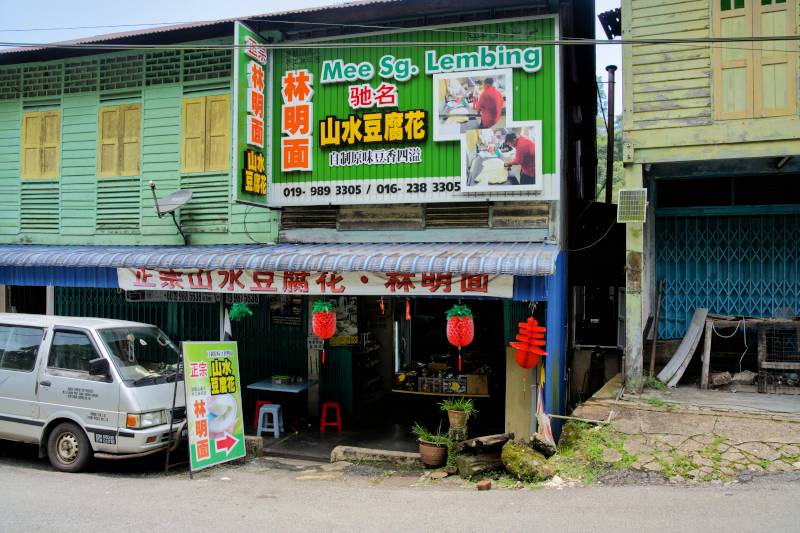
Sungai Lembing is famous for its noodles, and trying them was a must for us. So, we headed to the well-known noodle shop for lunch. We parked our car at the far end of another hanging bridge different from the one we visited the day before. After reaching the other end, we walked toward a row of old double-story wooden shops with their backyards facing the river.
The first shop we came across was precisely what we were looking for, easily identified by its colorful signboard that read Mee Sg. Lembing. The front part of the shop was the noodle production area, which wasn’t operating at the time, but we could still see freshly prepared dough sitting in the mixer.
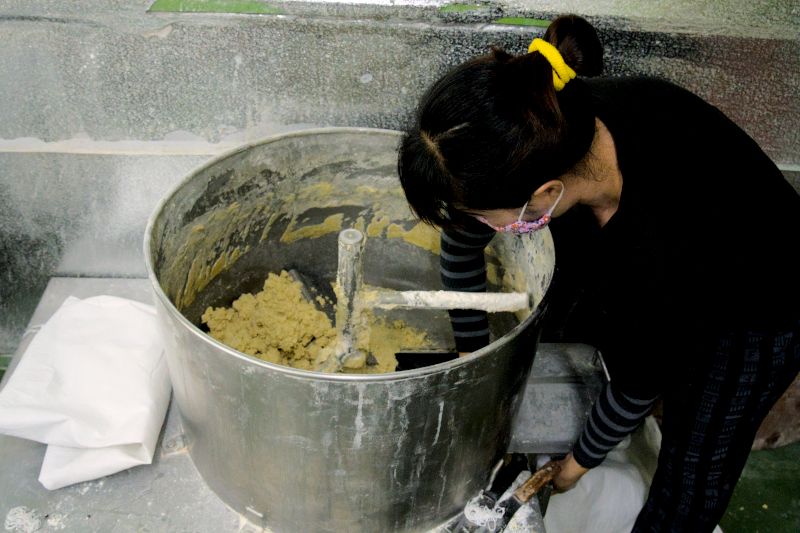
The rear area, facing the river, had been converted into a small restaurant where we sat down to enjoy another serving of the Lembing noodles.
These noodles are renowned for being made using traditional techniques passed down through generations. Their slightly chewy, springy bite comes from the use of high-quality mountain water that’s naturally rich in minerals, together with time-tested noodle-making skills.
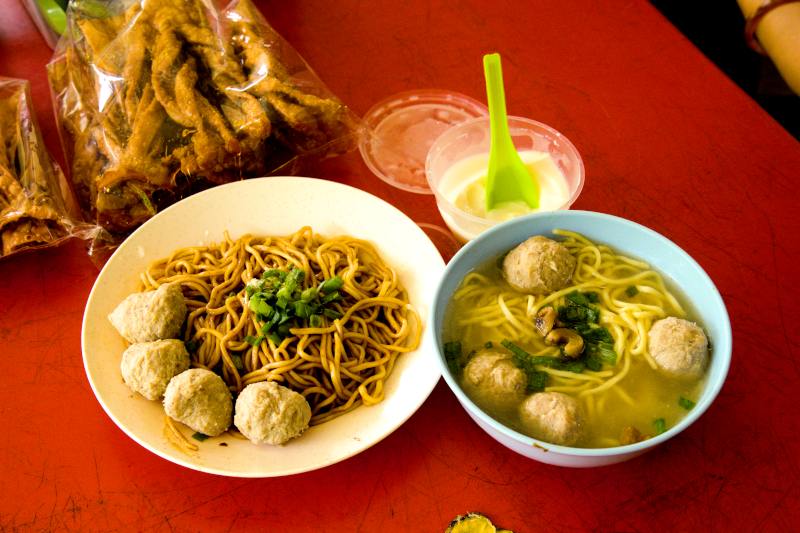
The noodles are served at the restaurant and also supplied to other eateries and retailers.
Besides the noodles, we also tried the Tofu Fa (山水豆腐花), which was incredibly silky and smooth, made with the same pristine mountain water used in the noodles.
After that, we stepped into the next-door shop called 家传食铺, which sells similar items. However, the central area was filled with trays and tables where they were busy making traditional coconut biscuits. These biscuits are unique to Sungai Lembing and are usually enjoyed by dipping them into a hot cup of local coffee.
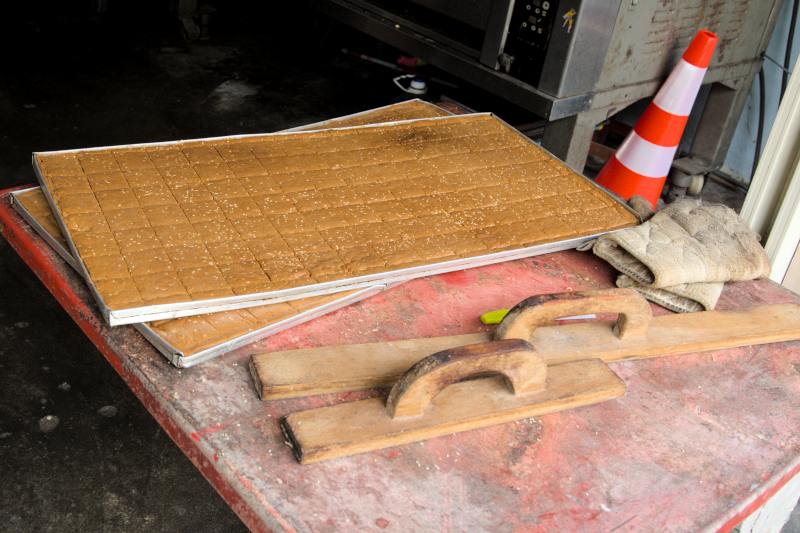
9. Panorama Hill
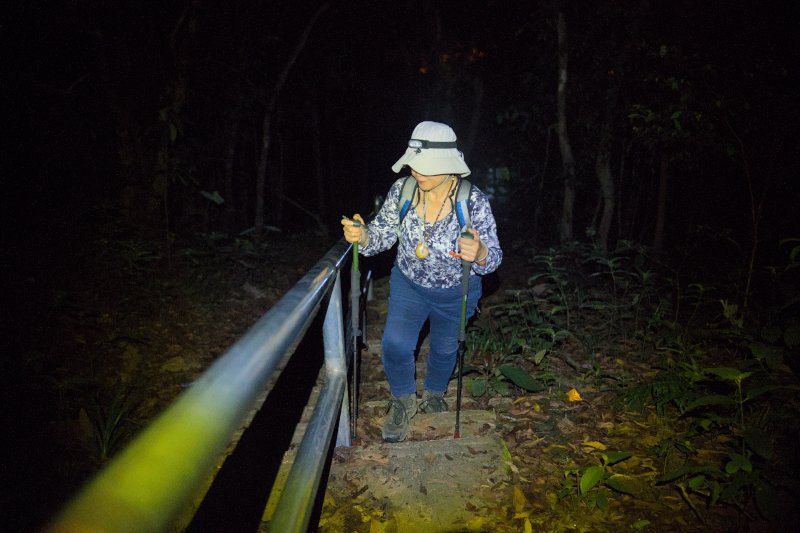
On the second day, we stayed in Kuantan and returned to Sungai Lembing early in the morning to climb up Panorama Hill and watch the sunrise. When we reached, we skipped breakfast and went straight to the trailhead. A parking lot is available, but the toilet was locked for an unknown reason. Therefore, we had to return to the market and use the toilet at the temple opposite the market before starting the climb, as there are no toilet facilities at the top.
There was already a large crowd, all of whom were equipped with torchlights and headlamps, hiking up the hill. The first part of the hike is a trail, which quickly turns into concrete steps with metal railings. There are flights of stairs that lead all the way up, covering a distance of approximately 800 meters until the top.
The hike in darkness, with our headlamps lighting the way, reminded me of what we experienced climbing Mount Kinabalu in the early morning as well as the hike up to Poon Hill in Nepal.
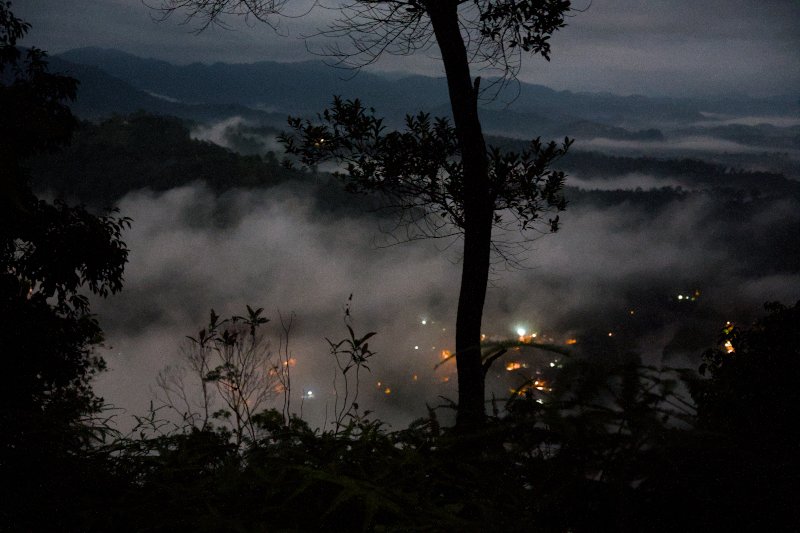
Midway up, there's a viewpoint where we could see the town of Sungai Lembing, lit with multi-colored lights. As the sky was gradually lighting up, we could see a sea of clouds floating just below the buildings.
The trail eventually reaches a junction where steps and jungle paths split. As the sky slowly brightened, I switched off my headlamp.
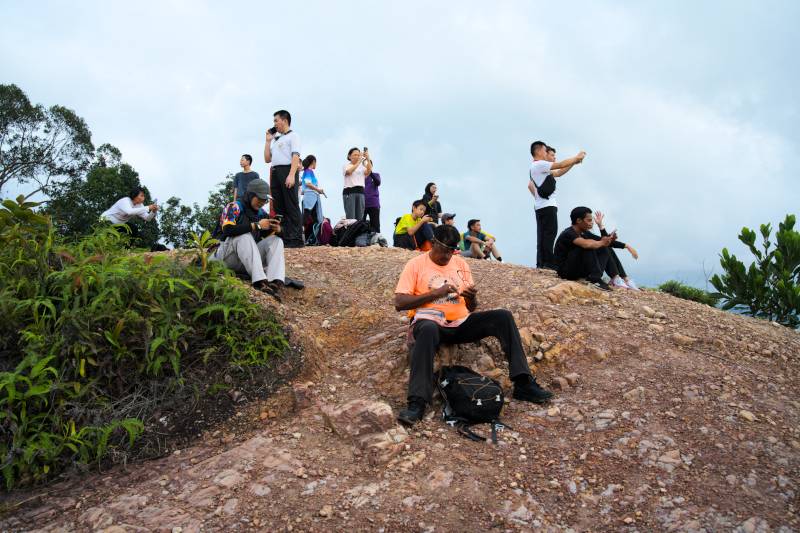
We finally reached the top, where a small hut and a fork in the path led to two different viewpoints. I first took the right turn, which brought us to a viewpoint facing west, marked by the large, colorful "Panorama Hill" signboard. Then I returned and took the other path leading east, hoping for a beautiful sunrise view.
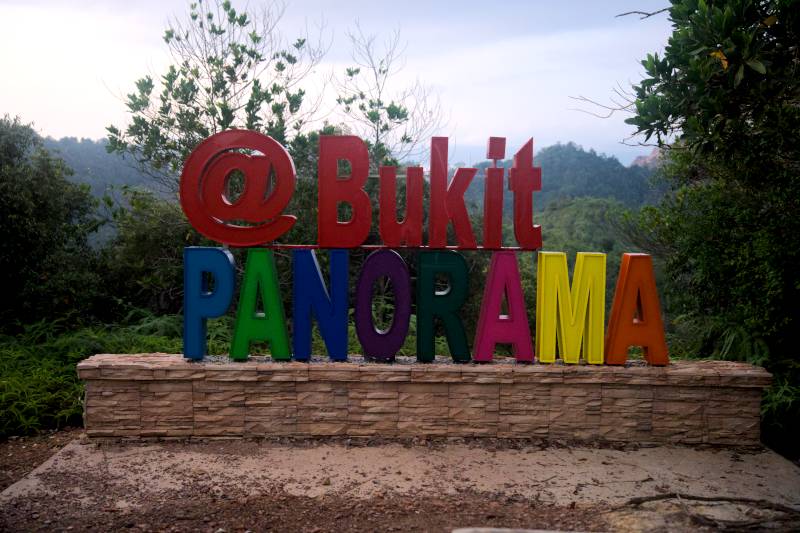
The trail on the east side was rocky, especially near the top, where a few people accidentally slipped. Fortunately, nothing serious happened.
There is a beautiful panoramic view facing the east, with a sea of clouds stretching across the landscape. Unfortunately, we couldn’t see the sunrise due to thick clouds near the horizon. Nevertheless, it was a great experience. We enjoyed chatting with other like-minded hikers and took plenty of videos and photographs.

10. Kedai Makan Fun
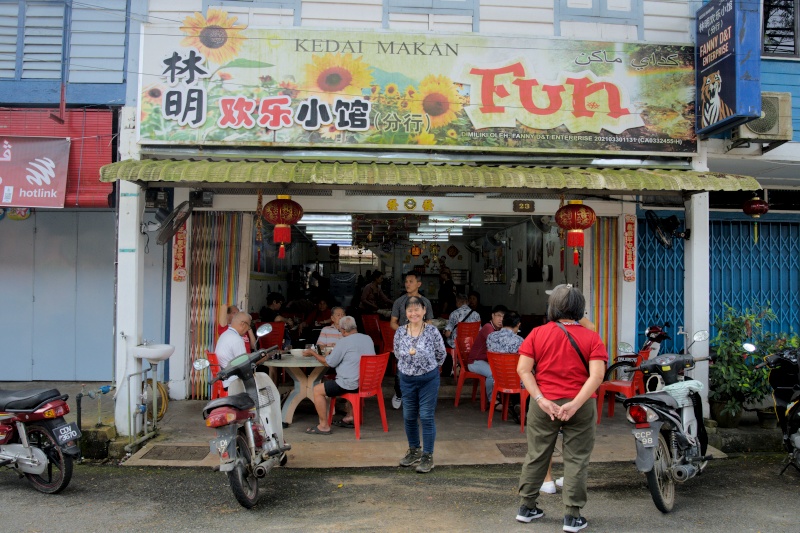
For lunch, we returned to Sungai Lembing town to have noodles and yong tau foo at Kedai Makan Fun. The town was much livelier by lunchtime than in the evening, with tour buses arriving and most of the shops now open.
Besides the signature Sungai Lembing noodles, we were there specifically to try the famous mountain water Yong Tofu. We spoke to the owner, Fenny, who explained that the tofu’s exceptional smoothness comes from the high-quality mountain water in this region. The tofu and various vegetables are stuffed with a mixture of fish paste and minced pork. Interestingly, the stuffing isn’t blended; instead, the fish paste and pork are layered distinctly within the tofu.
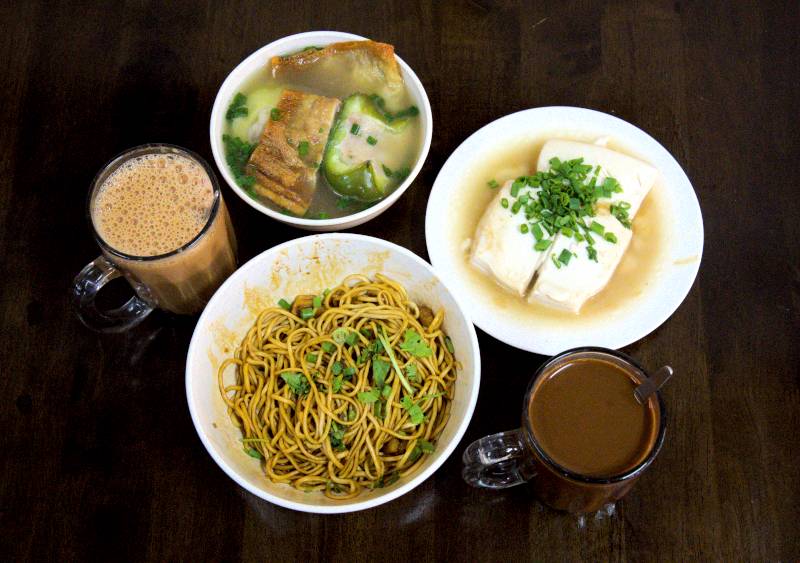
It’s served with a rich, superior stock that has been slowly simmered with pork bones, resulting in a deep and flavorful broth.
The taste was excellent, especially the silky texture of the tofu paired with the thick, savory broth. This is one restaurant I wouldn’t miss when I return in the future.
11. Gua Charas (Charas Cave)
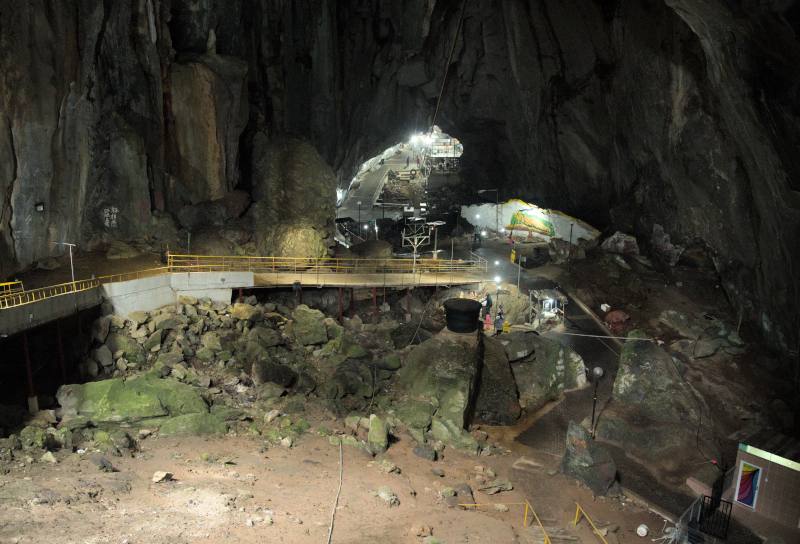
On our way back from Sungai Lembing to Kuantan, we diverted to visit a unique cave that features both a Chinese and a Hindu temple.
There is a large parking lot in front, where we had to pay RM2 for both parking and entrance. From there, we walked up a flight of stairs to reach the first section, which is a Buddhist shrine. This shrine is dedicated to the Buddha as well as two Thai monks. The temple itself is built within the limestone cave.
After that, we reached a point where a donation of RM2 was requested, which required climbing several flights of metal stairs. These stairs eventually lead to an upper cave, where the reclining Buddha and a shrine to Lord Shiva are located.
After we reached the main chamber, it was a large limestone cave with a pathway and stairs that guided us deeper inside.
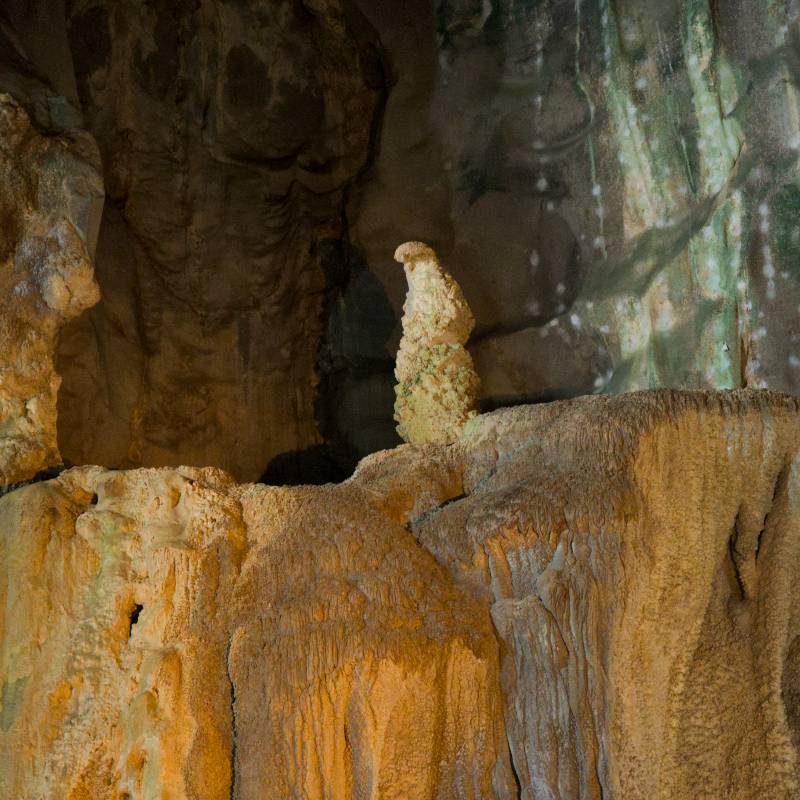
There is a limestone formation closely resembling the Goddess of Mercy on the left cliff. On the right, another worship area is dedicated to the white snakes. According to a gentleman who was praying to the snakes, there are a total of seven white snakes in the cave, which are considered rare to witness. He even showed us photos of the snakes he had taken before.
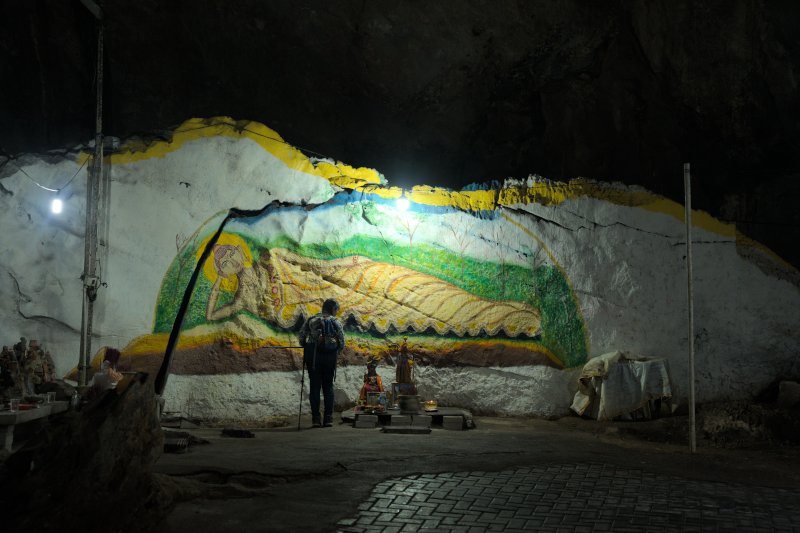
Deeper inside is a 15-meter-long rock that resembles a reclining Buddha. It is said to have been placed there by a Thai monk in the 1960s.
Further in is the Hindu shrine dedicated to Lord Shiva. There is a small altar for prayer, and when we visited, some devotees were praying there.
The cave is not as well-maintained as many other temple caves we have visited, as it is still undergoing ongoing construction. Nonetheless, it remains one of the few multi-religious cave temples we’ve encountered. There is no public transportation to reach this place, so the best option is to drive there yourself.
12. Panching Waterfall
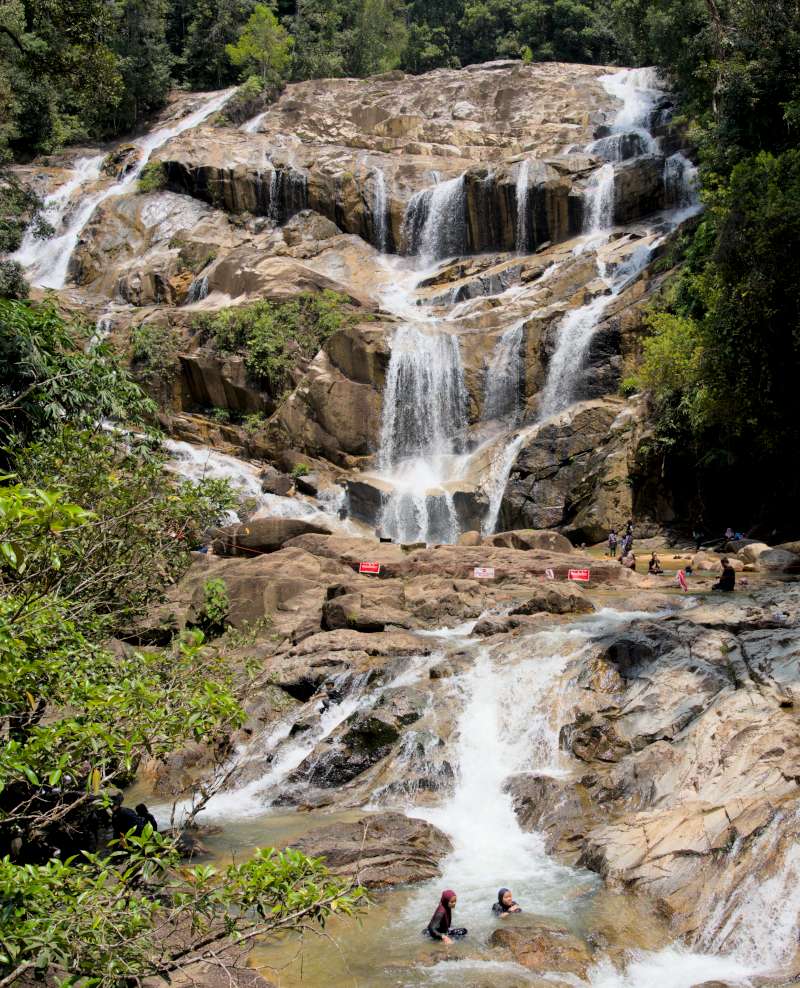
After visiting Gua Charas, we arrive at Panching Waterfall, which is just about a 10-minute driving distance from Gua Charas.
There is a large parking area. The place was crowded, mostly local families who came to enjoy picnics by the water.
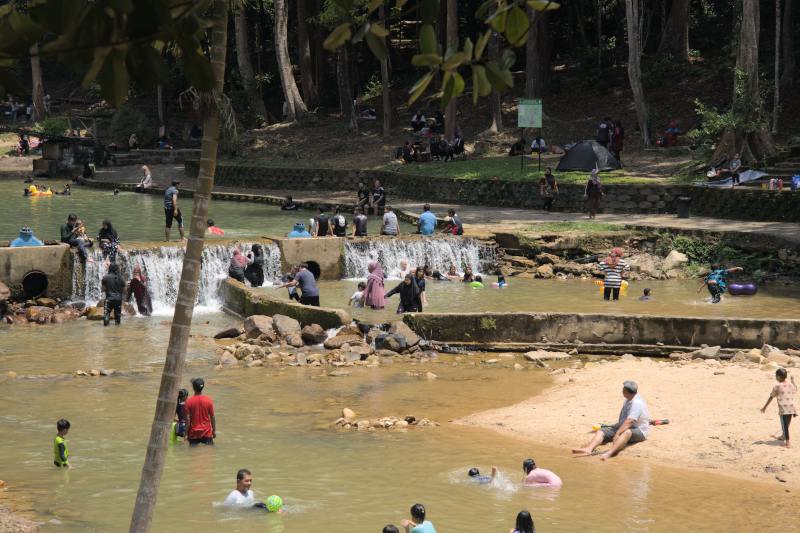
The waterfall has two cascades. The upper one is closer to the waterfall. It’s a popular spot for swimming and attracts younger visitors who are eager to take on the stronger currents. The lower tier, on the other hand, is much more family-friendly. The water there is shallow, calm, and slow, making it ideal for families with children.
We followed a path that led to a hanging bridge, a vantage point facing the waterfall. The waterfall is surrounded by a dense forest, where monkeys roam, and tropical birds sing, creating a natural symphony alongside the sound of the flowing water. It’s a place that feels so close to nature, yet it’s easily accessible from the city.
There are also toilets and changing rooms available for those wanting to change into swimwear.
While we were there, people at the upper cascade were climbing those large rocks and lying between clusters of stones to enjoy the water's flow. Those simple, joyful moments made us forget the stress and constant thoughts that often weigh on the mind.
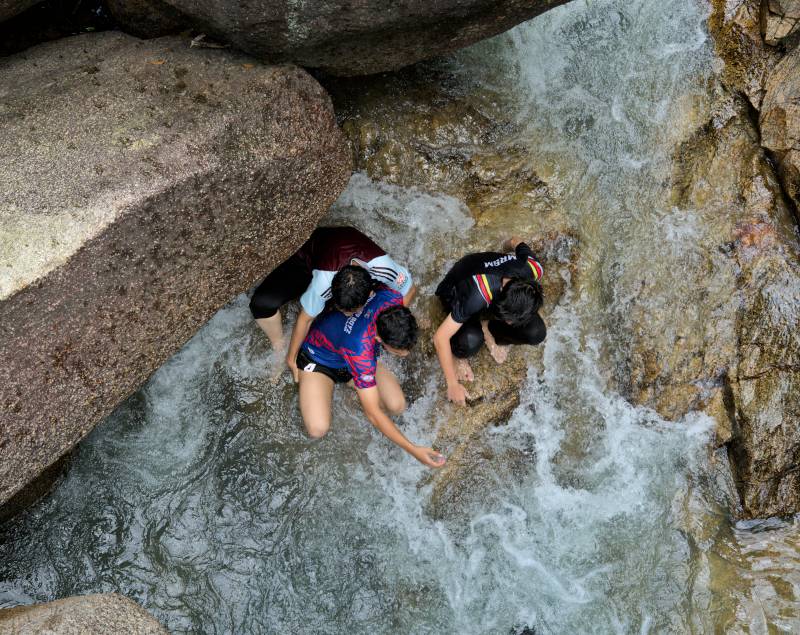
It’s an excellent place for anyone looking to escape the hustle and bustle of the city. If you’re coming from Kuantan, it’s only about a half-hour drive away.
13. Sungai Lembing Museum
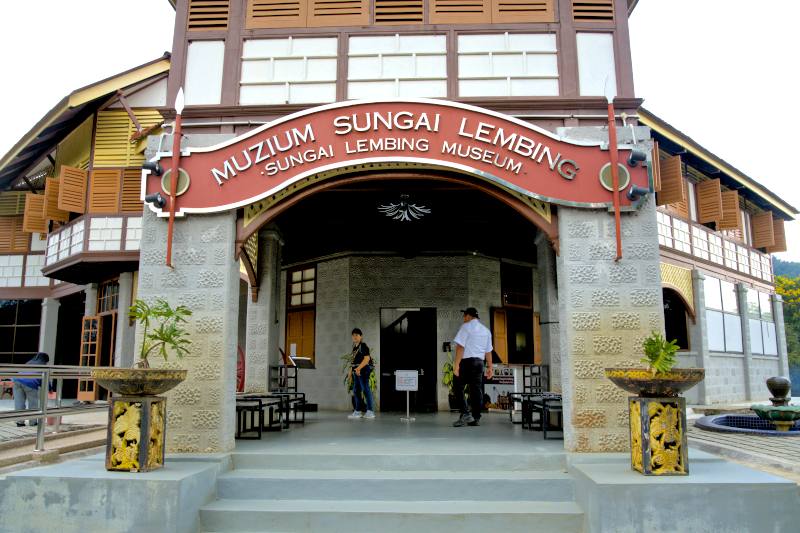
We had covered most of the interesting places and food spots in Sungai Lembing. However, our trip would not be complete without understanding its past and learning a little about the history of this mining town. So, we headed to the Sungai Lembing Museum to gain deeper insight.
Below are some photographs we took, along with information about this historic town based on what we gathered from the museum.
- The name Sungai Lembing. As the legend goes, a group of hunters once speared a deer. With the spear still embedded in its body, the deer leaped into the river and vanished. Years later, tin miners graveling for tin in the river discovered the missing spear (lembing in Malay). Locals then named the area Sungai Lembing, or “Spear River.” However, there is no concrete evidence to confirm this tale. It remains a piece of local folklore.
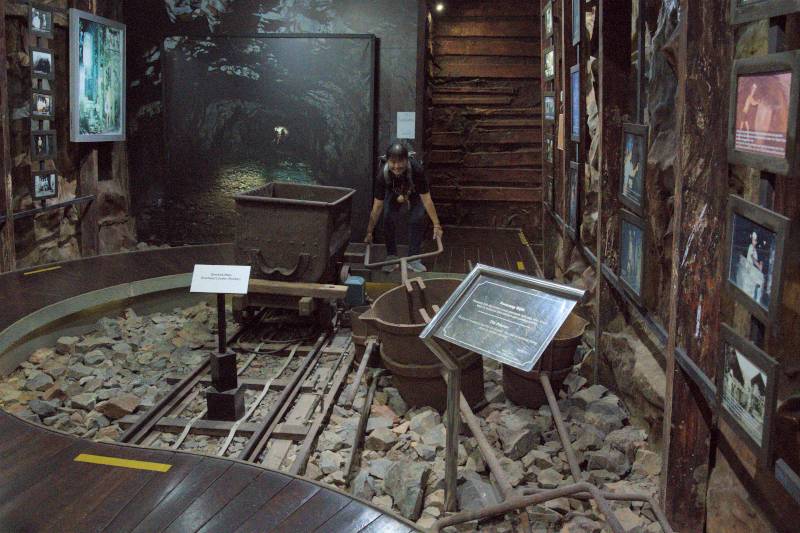
- The history. Sungai Lembing was established in the early 1900s as a tin mining settlement following the operations of the British company Pahang Consolidated Company Limited (PCCL) there.
- The museum building. The Sungai Lembing Museum was opened to the public in 2001. The museum building was once a colonial-style bungalow that housed general managers from European companies. During the Japanese occupation of World War II, the building served as the headquarters for the Japanese Armed Forces until 1945. After the Japanese surrender, it reverted to its role as PCCL’s headquarters until the mining company ceased operations in 1986.
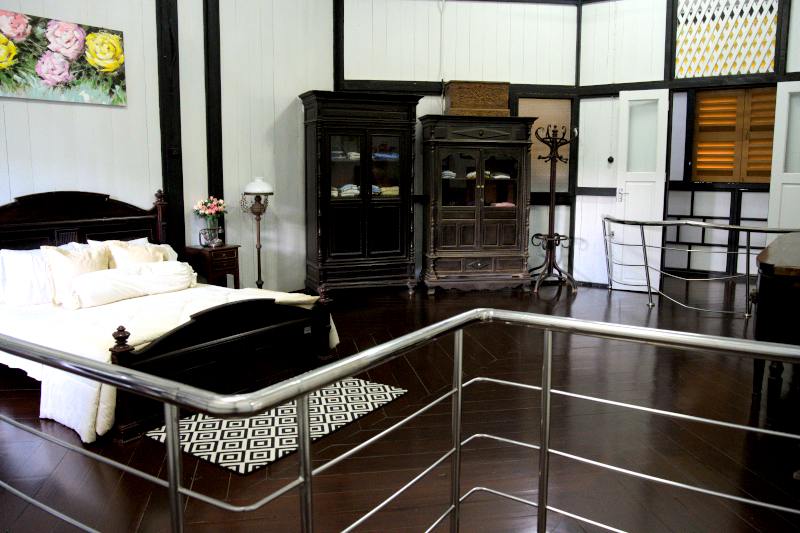
- The Exhibits The museum showcases Sungai Lembing’s golden age as one of the largest underground tin mining hubs in the world. The exhibits feature a diverse range of mining artifacts, including drills, helmets, miners’ uniforms, safety gear, rail tracks, mining carts, and period furniture. These relics offer a glimpse into the lives of miners and the scale of the industry that once thrived in this area.
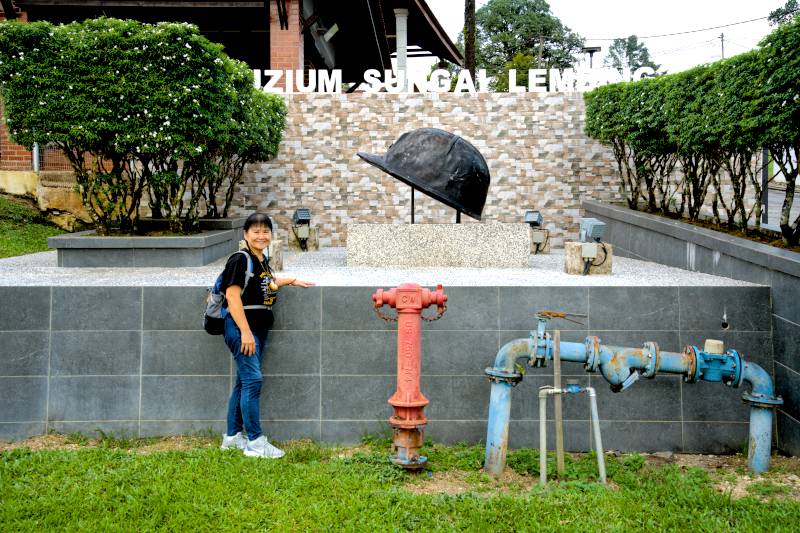
- Underground Tunnels Sungai Lembing, often referred to as the "El Dorado of the East," was one of the most significant tin-producing areas during the late 19th and early 20th centuries under British colonial rule. Known locally as Pengkang, these tunnels were incredibly deep and complex. At its peak, Sungai Lembing's mine system was among the largest in the world. The combined total length of all tunnels spanned nearly 322 kilometers. Today, these underground tunnels are no longer safe for exploration. Many are submerged in water and have suffered from years of neglect, soil erosion, and landslides.
Conclusion
The list above covers all the places we visited in Sungai Lembing. Since it is less than an hour’s drive from Kuantan, it makes perfect sense to include it in your itinerary if you’re planning a trip to Kuantan. The contrast between the two is striking: Sungai Lembing offers a glimpse into a slower, simpler way of life, while Kuantan presents the energy of a growing, modern city. Experiencing both will give you a richer and more balanced perspective of the East Coast.
Don’t forget to check out our blog on where to eat In Kuantan, as well as all the beautiful beaches and must-visit spots in Kuantan!
🎞️ Watch our trip shot at Sungai Lembing
Please watch our video, shot in Sungai Lembing, by clicking 👇👇 the image below.
